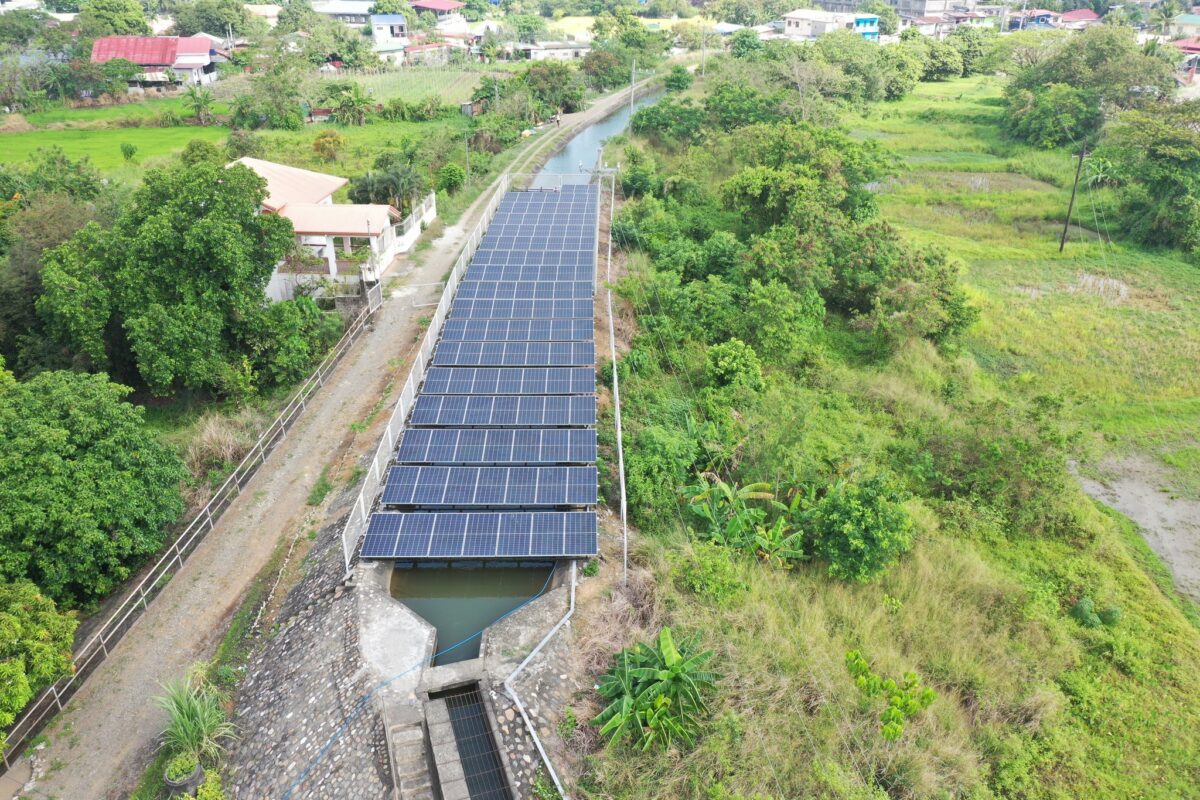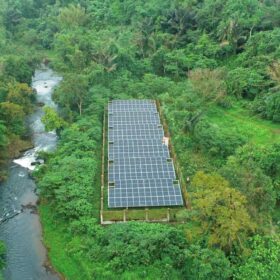The Philippine government’s irrigation development and management corporation, the National Irrigation Administration (NIA) last week announced the country had 183 solar-powered irrigation projects slated for development next year – a 24.4% increase on the 147 projects completed this year.
This year’s projects irrigated a total of 830 ha of agricultural land, costing PHP1,643,583,002 ($29 million). There were 17 solar-powered irrigation projects completed by September 15, with the agency estimating they will spend Php 1,720,984,000 on next year’s projects irrigating 2,168 ha of agricultural land.
Among the completed projects, were two PV arrays deployed on top of irrigation canals. Solar projects on canals are proliferating across the world. Recent projects were announced in Spain, India, France, United States, and Pakistan, among others, but only a few of them have been realized to date. These projects provide electricity without occupying land and reducing water evaporation.
The two projects are the 350 ha Buspan Solar Pump Irrigation System in Malamig, Central Luzon, and the Anbuspa Solar Pump Irrigation System located in Tibagan, Central Luzon. The latter project was replicated from the NIA Region III project, located in Bulacan, which installed 155 solar panels with 60 KW capacity on the top of an irrigation canal.
The agency said they were pursuing solar-powered irrigation projects to replace “expensive diesel pumps” with the end-use of solar energy deemed the “most accessible and economically viable” of all renewable energy sources.
“With the soaring price of gasoline and diesel, these projects can continue to irrigate their lands free from the burden of shouldering high fuel costs,” the agency said in the announcement. “The technology consists of solar panels, pumps, electronic pump controllers, storage tanks, and conveyor systems. With solar power, it is seen to be more cost-effective than the fuel-powered irrigation pumps due to operation costs.”
The Philippines aims to install 15 GW of clean energy by 2030, with a possible focus on mini-grids and standalone clean power systems due to the country's archipelagic nature, according to a 2022 report by the International Renewable Energy Agency (IRENA).
This content is protected by copyright and may not be reused. If you want to cooperate with us and would like to reuse some of our content, please contact: editors@pv-magazine.com.






3 comments
By submitting this form you agree to pv magazine using your data for the purposes of publishing your comment.
Your personal data will only be disclosed or otherwise transmitted to third parties for the purposes of spam filtering or if this is necessary for technical maintenance of the website. Any other transfer to third parties will not take place unless this is justified on the basis of applicable data protection regulations or if pv magazine is legally obliged to do so.
You may revoke this consent at any time with effect for the future, in which case your personal data will be deleted immediately. Otherwise, your data will be deleted if pv magazine has processed your request or the purpose of data storage is fulfilled.
Further information on data privacy can be found in our Data Protection Policy.